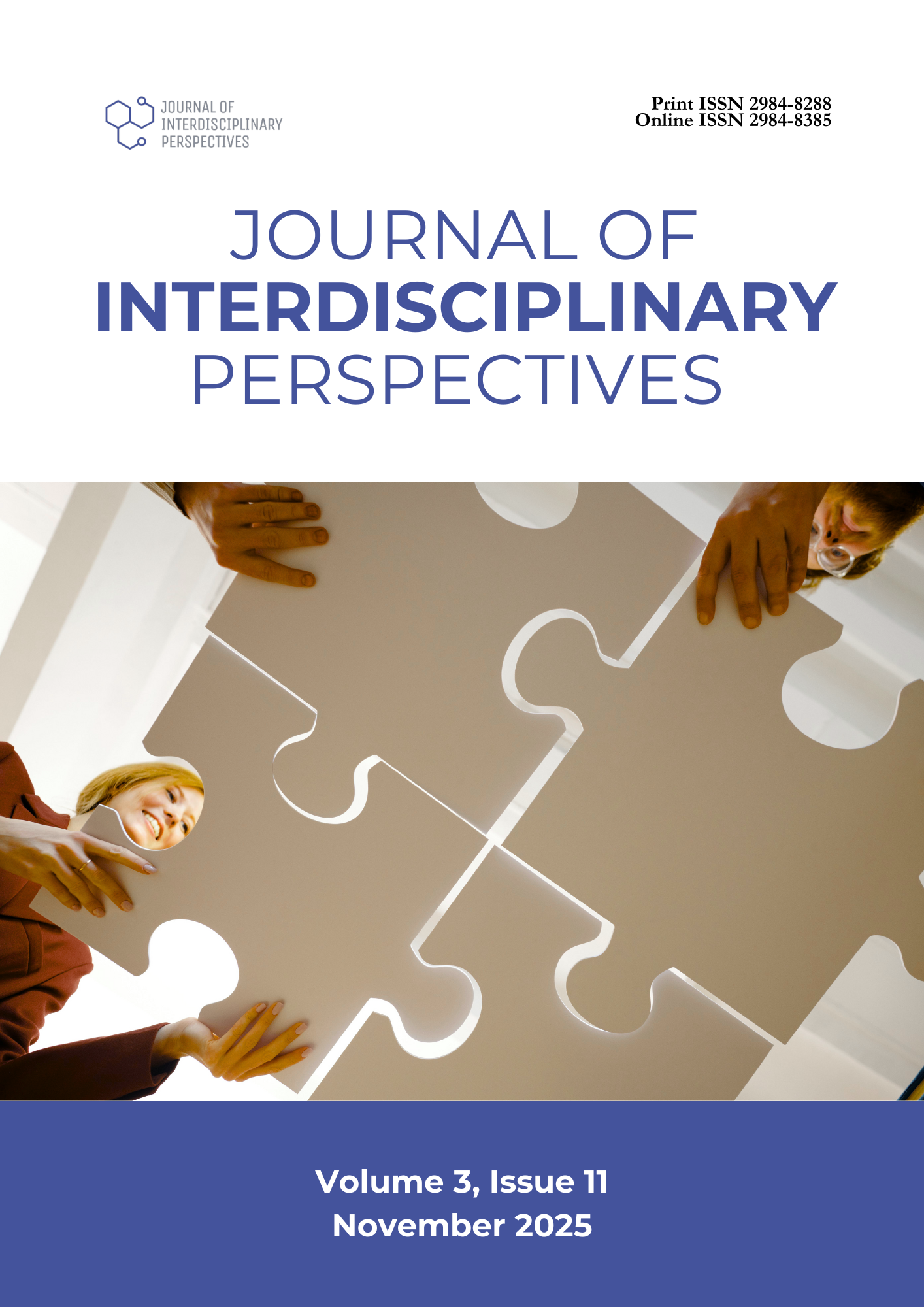Assessing the Environmental Mental Models of Grade School Students in Negros Oriental, Philippines
DOI:
https://doi.org/10.69569/jip.2025.598Keywords:
Assessment, DAET-R, Environment, Mental modelAbstract
Understanding how environmental perceptions evolve among younger generations is crucial for developing effective educational curricula and policies that promote sustainable environmental practices. This study explored the ecological perceptions of Grade 7 and Grade 10 students in Negros Oriental using a mental model. A total of 60 students who volunteered were selected for the study, comprising 39 females and 21 males. Among the participants, 30 were in Grade 7 and 30 were in Grade 10. Participants were selected based on their willingness and availability to participate in the study voluntarily. A mixed-method approach combining quantitative and qualitative methods was employed. The Draw-an-Environment Test-Rubric (DAET-R) was used to quantify students' environmental mental models. The DAET-R scores were computed and analyzed using the Mann-Whitney U test to assess statistical differences by grade level. Semi-structured interviews, such as “What comes into your mind when you think about our environment?” and “What do you think constitutes the environment?”, were used to examine students’ mental representations of the environment qualitatively. The results of this study showed a significant difference in the climate models between Grade 7 and Grade 10 students (p=0.019). Students' ecological awareness increases with age, evolving from simple depictions of nature (Grade 7) to more complex themes that incorporate human impact and technology (Grade 10). However, a significant gap in environmental literacy and systems thinking was observed, as no students demonstrated the highest level of conceptual integration. To address this, educational curricula need to prioritize experiential and systems-based learning, fostering critical thinking and ecological responsibility. Students should engage with real-world issues through interdisciplinary approaches. Furthermore, teacher training in experiential methods, technology integration, and hands-on activities is crucial to equip educators with the skills to facilitate this learning effectively.
Downloads
References
Ahi, B., Balcı, S. & Alisinanoğlu, F. (2017). Exploring Turkish preservice teachers' mental models of the environment: Are they related to gender and academic level?. The Journal of Environmental Education, 48(3), 182-195. https://eric.ed.gov/?id=EJ1138755
Ahi, B., & Kahriman-Pamuk, D. (2021). "Environment is like nature": Opinions of children attending forest kindergarten about the concept of environment. International Electronic Journal of Environmental Education, 11(2), 91-110. https://doi.org/10.18497/iejeegreen.944378
Aydin, F., & Coskun, M. (2011). The metaphoric perceptions of gifted students towards "environment" concept (Ankara sample-Turkey). Scholars Research Library, 3(2), 577-585. Retrieved from https://tinyurl.com/2j9u54jz
Çalış, D., & Balcı, S. (2021). Environmental Mental Models of primary school students: Are they related to gender and grade level?. International Electronic Journal of Environmental Education, 11(2), 127-144. https://doi.org/10.18497/iejeegreen.967850
Bayati, I. (2023). Students’ perceptions of the natural world and their attitudes toward ecological issues: What is the relationship between them? Australian Journal of Environmental Education, 39(4), 536-549. https://doi.org/10.1017/aee.2023.29
Escatron, M.J.E., Adalon, M.S., Flores, D.K.G., & Escatron, R.A. (2023). Environmental awareness and practices of the selected public senior high school in Surigao City, Philippines: A case study. Cognizance Journal of Multidisciplinary Studies 3(8),1054-1062. https://doi.org/10.47760/COGNIZANCE.2023.V03I08.028
Fjællingsda, L. K.S., & Klöckner, C.A. (2019). Gaming Green: The educational potential of Eco – A digital simulated ecosystem. Frontiers in Psychology, 10, 846. https://doi.org/10.3389/fpsyg.2019.02846
Glavina, A., Misic, K., Baleta, J., Wang, J., & Mikulcic, H. (2025). Economic development and climate change: Achieving a sustainable balance. Cleaner Engineering and Technology, 26, 100939. https://doi.org/10.1016/j.clet.2025.100939
Hajj-Hassan, M., Chaker, R., & Cederqvist, A.M. (2024). Environmental education: A systematic review on the use of digital tools for fostering sustainability awareness. Sustainability, 16, 3733. https://www.mdpi.com/2071-1050/16/9/3733
Jones, N. A., Ross, H., Lynam, T., Perez, P., & Leitch, A. (2011). Mental Models: An interdisciplinary synthesis of theory and methods. Ecology and Society, 16(1). http://www.jstor.org/stable/26268859
Kraalingen, I., & Beames S. (2024). Presence and disconnectedness-the influence of smartphones usage on human-nature and human-human interactions in outdoor studies. Frontiers in Education (9). https://doi.org/10.3389/feduc.2024.1369591
Larasaty, D., Rohmat, D., Somantril, L., & Fitriana, A.N. 2024. Teacher’s role in enhancing students environmental literacy: A systematic literature review 2019-2024. Jurnal Pendidikan MIPA, 25 (3), 1133-1150. http://jurnal.fkip.unila.ac.id/index.php/jpmipa/
Liu, S.C., & Lin, H.S. (2015). Exploring undergraduate students’ mental models of the environment: Are they related to environmental affect and behavior? The Journal of Environmental Education, 46 (1), 23-40. https://doi.org/10.1080/00958964.2014.953021
Mantilla, L. K. C., & Acledan, M. Y. (2022). Environmental mental models of science educators: A multiple case study of LET Topnotchers. International Journal of Humanities, Social Sciences and Education, 9(1), 174–183. https://doi.org/10.20431/2349-0381.0901014
Moore, A. (2025). Five printable board games to engage students in the health of our planet. Population Education. Retrieved from https://tinyurl.com/yzb4pe63
Moseley, C., Desjean-Perrotta, B., & Utley, J. (2010). Exploring preservice teachers' mental models of the environment. Environmental Education Research, 16(2), 189–208. Retrieved from https://tinyurl.com/5n6vrtej
Partlow MJ. 2019. Schools show concern in environmental issues in Negros. Philippine News Agency. Retrieved from https://www.pna.gov.ph/articles/1079327
Perdana, P.R., Sukmalasari, R., Siti Suharsih, S., & Yusop S.A.M. (2025). Digital storytelling to enhance English language students’ understanding of climate change mitigation: A linguistic evidence Journal of English Language Studies, 10(1), 64-81.https://jurnal.untirta.ac.id/index.php/JELS/article/view/31333/14417
Punzalan, C. H. (2020). Evaluating the environmental awareness and practices of senior high school students: Basis for environmental education program. Aquademia, 4(1), ep20012. https://doi.org/10.29333/aquademia/8219
Ramos, R., Rodrigues, M.J., & Rodrigues, I. (2024). Activity proposals to improve children’s climate literacy and environmental literacy. Education Sciences, 14, 194. https://doi.org/10.3390/educsci14020194
Ricoy, M.C. & Sánchez-Martínez, C. (2022). Raising ecological awareness and digital literacy in primary school children through gamification. International Journal of Environmental Research and Public Health, 19, 1149. https://doi.org/10.3390/ijerph19031149
Safiti, D., Marini, A., Irwansyah, P., & Sudrajat, A. (2025). Transforming environmental education with augmented reality: A model for learning outcome. Social Sciences & Humanities Open, 12, 101796. https://doi.org/10.1016/j.ssaho.2025.101796
Sarwar, N., Nisa Bibi, F., Junaid, A., & Alvi, S. (2024). Impact of urbanization and human development on ecological footprints in OECD and non-OECD countries. Heliyon, 10(9), e38058. https://doi.org/10.1016/j.heliyon.2024.e38058
Sunassee, A., Bokhoree, C., & Patrizio, A. (2021). Students’ empathy for the environment through Eco-ArtPlace-Based education: A review. Ecologies, 2, 214–247. https://doi.org/10.3390/ecologies2020013
Van de Wetening, J., Leighten, P., Spitzer, J., & Thomas S. (2022). Does environmental education benefit environmental outcomes in children and adolescents? A meta-analysis. Journal of Environmental Psychology, 81. https://doi.org/10.1016/j.jenvp.2022.101782
Vázquez-Vílchez, M., Garrido-Rosales, D., Pérez-Fernández, B., & Fernández-Oliveras. (2021) A. Using a cooperative educational game to promote pro-environmental engagement in future teachers. Education Sciences, 11, 691. https://doi.org/10.3390/educsci11110691
Vladova, I. (2023). Towards a more sustainable future: The importance of environmental education in developing attitudes towards environmental protection. SHS Web of Conferences, 175. http://doi.org/10.1051/shsconf/202317601009.
Yalcin, A. & Alkar, E. (2024). The perception of technology in secondary school students’ drawing and expressions. Participatory Educational Research, 11(3), 244-259. https://dergipark.org.tr/tr/download/article-file/3706547
Zachariou, F., Voulgari, I., Tsami, E., & Bersimis, S. (2020). Exploring the attitudes of secondary education students on environmental education in relation to their perceptions on environmental problems: The case of the prefecture of Viotia. Interdisciplinary Journal of Environmental and Science Education, 16 (1), e02208. https://doi.org/10.29333/ijese/6442
Downloads
Published
How to Cite
Issue
Section
License
Copyright (c) 2025 Journal of Interdisciplinary Perspectives

This work is licensed under a Creative Commons Attribution-NonCommercial 4.0 International License.








